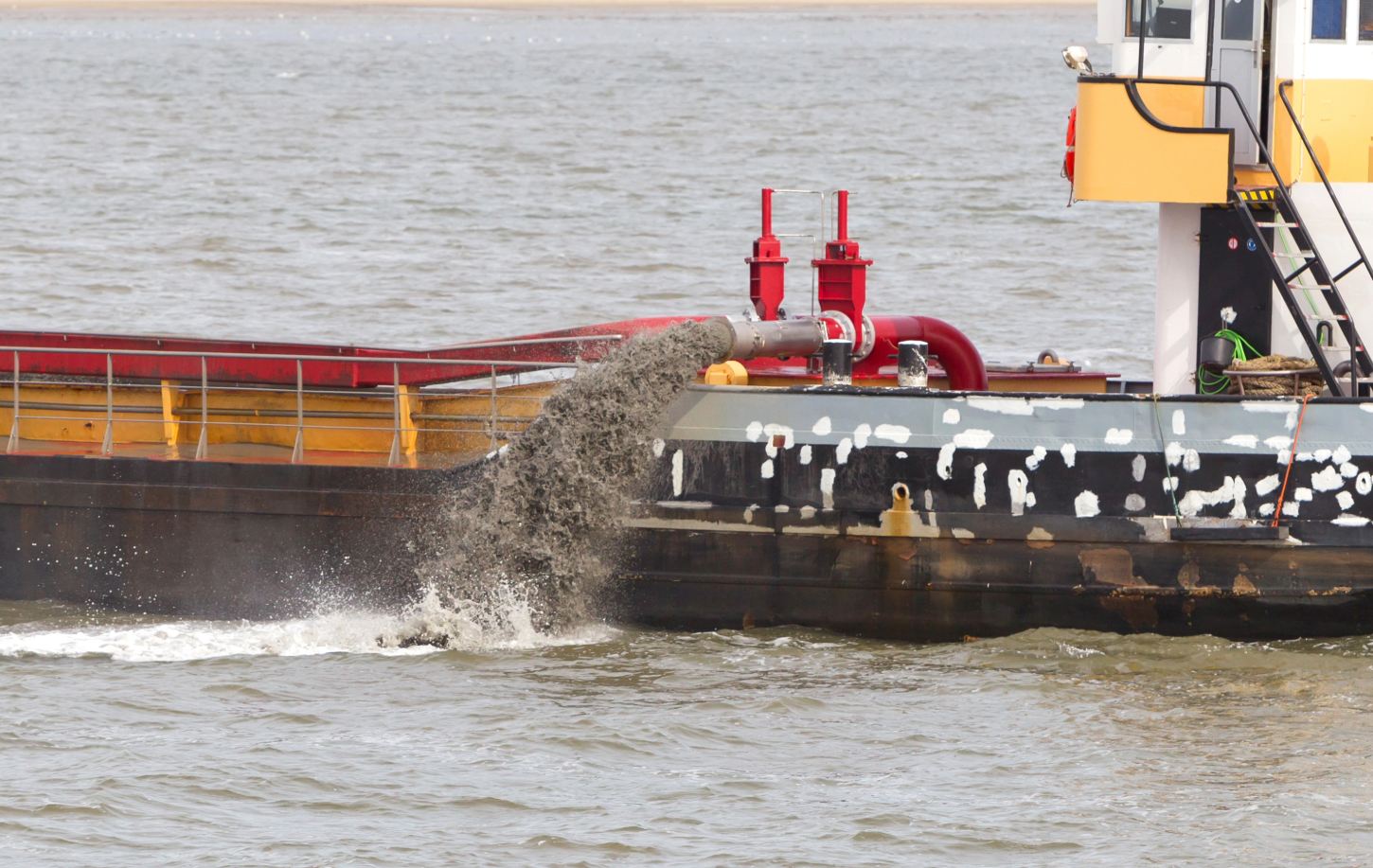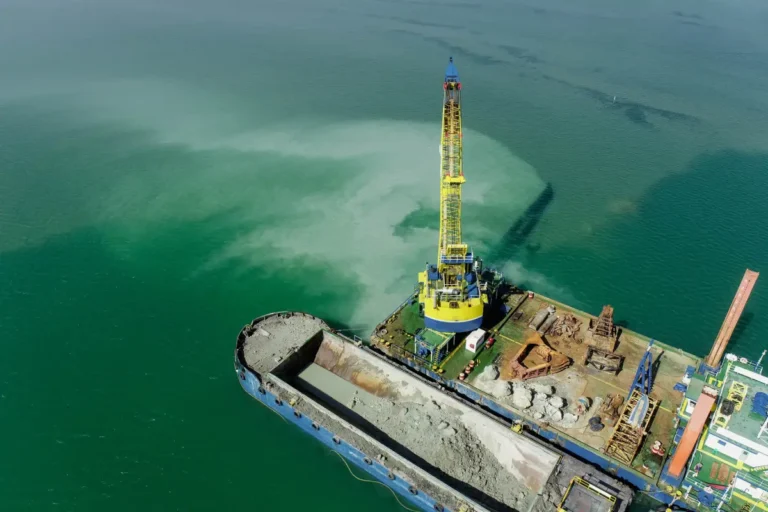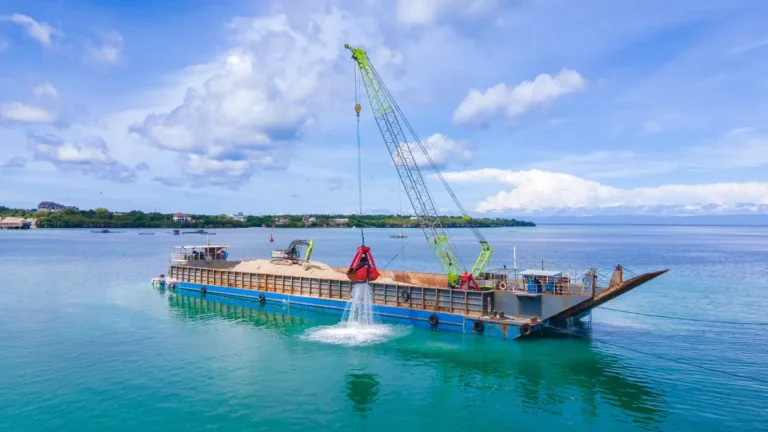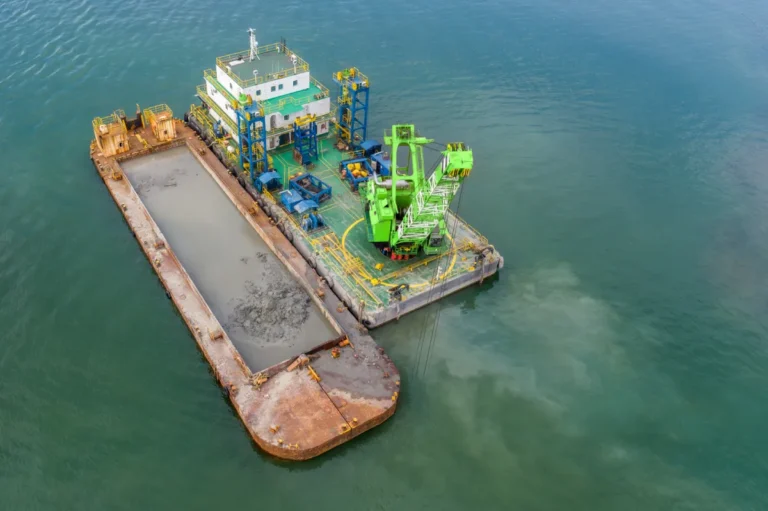Dredging plays a vital role in maintaining waterways, restoring ecosystems, and supporting marine construction. At the center of it all is the dredger boat. Whether you’re new to the concept or looking to understand better what a dredge boat is, this beginner’s guide will walk you through its purpose, how it works, the different types available, and why it’s an essential asset in both industrial and environmental operations. From ports and rivers to shallow wetlands, these specialized vessels are designed to tackle sediment challenges with precision and power.
What Is a Dredger Boat?
A dredger boat is a specialized watercraft designed for excavating and removing sediment, sludge, or debris from the bottom of bodies of water such as rivers, lakes, harbors, and coastal areas. These vessels are equipped with powerful pumps, cutterheads, suction arms, or mechanical buckets that enable them to dig, collect, and transport underwater material to a designated disposal or processing site.
If you’re wondering what a dredge boat is, it’s important to understand that it differs significantly from conventional marine vessels. While traditional boats are built primarily for transportation, cargo, or fishing, a dredge boat serves a very specific engineering function: to maintain or restore waterway depth and quality by clearing accumulated material from the bed of the waterway. This makes it a critical tool in marine construction, port maintenance, flood control, and environmental restoration.
The core functions of a dredger boat include sediment removal to keep navigational channels clear, preventing siltation that can disrupt shipping or infrastructure. It also plays a key role in maintaining water depth for safe vessel passage, restoring the capacity of reservoirs and ponds, and supporting ecological balance by removing contaminated or nutrient-rich sediments. Whether used in a major harbor or a remote inland lake, a dredge boat is crucial for maintaining the underwater environment and preserving aquatic infrastructure.
Components and Structure of a Dredger Boat
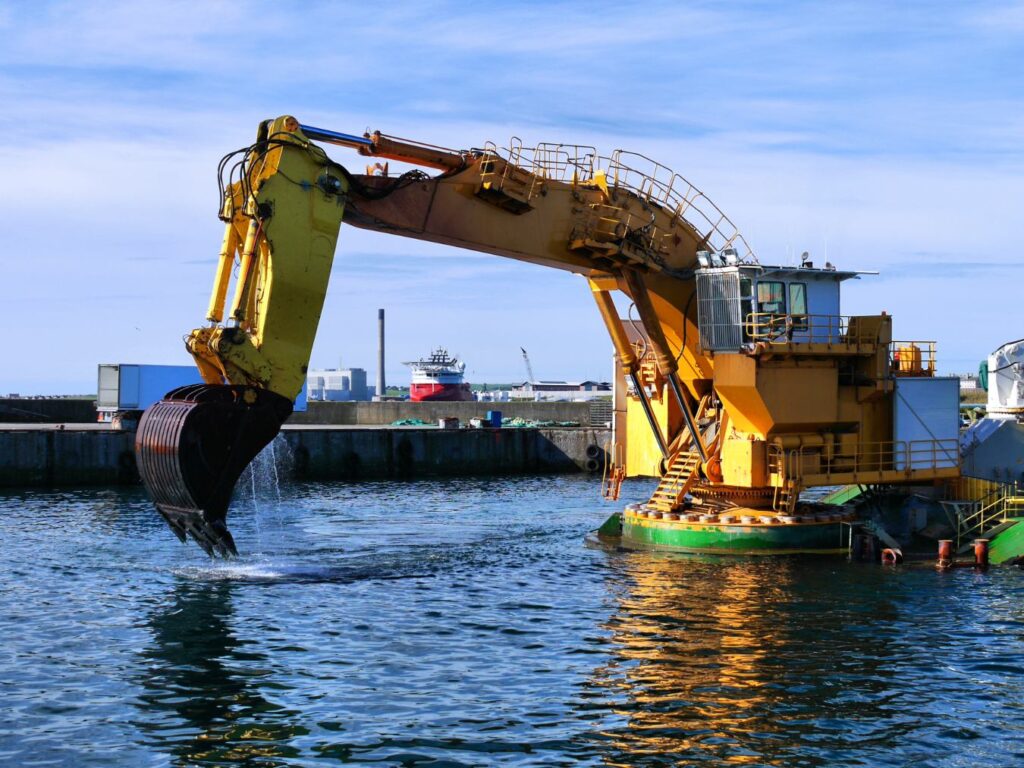
A dredger boat is more than just a floating platform—it’s a fully integrated machine designed for precision excavation and sediment transport. To understand what a dredge boat is, it’s essential to explore the core components that enable it to function efficiently in various marine and inland environments.
Hull and Platform
The hull serves as the base of the dredger boat, providing buoyancy and structural support for all onboard systems. The platform typically houses the operator’s cabin, control systems, fuel tanks, and access walkways. The design of the hull may vary based on the dredging environment—flat-bottom hulls are common for shallow water, while reinforced or modular pontoons are used in larger, more powerful dredgers.
Dredging Equipment
At the heart of any dredge boat is its dredging system, which includes tools such as a cutterhead, suction pipe, drag arm, or mechanical bucket. Cutter suction dredgers use a rotating cutter to break up material before it’s sucked through a pipeline, while mechanical dredgers use buckets or grabs. The dredging arm or ladder extends below the surface, enabling precise sediment removal from the waterbed.
Pump Systems and Discharge Pipelines
Once the sediment is loosened, high-capacity slurry pumps transport the mixture of solids and water through discharge pipelines to the designated deposit area. These pumps are engineered to handle abrasive and high-viscosity materials, making them a crucial component of any dredger boat. The discharge system may include floating or land-based pipelines depending on the project scope.
Power and Control Systems
The dredger boat is powered by diesel engines, electric motors, or a combination of both, depending on the design and size. These systems power not only propulsion but also the dredging equipment and hydraulic functions. Operators manage the entire system via onboard control consoles, allowing precise manipulation of dredging depth, suction force, and cutter speed.
Optional Additions
Modern dredge boats often incorporate advanced technology for greater accuracy and efficiency. This includes GPS for navigation, RTK systems for real-time positioning, depth sensors, and automation features that enable semi-autonomous operation. These additions are especially valuable in large-scale or environmentally sensitive dredging projects, ensuring that operations stay within planned boundaries.
How Dredger Boats Work: Step-by-Step Process
Understanding the operational flow of a dredger boat helps clarify its essential role in marine and inland water management. If you’re wondering what a dredge boat is and how it performs its tasks, the following step-by-step breakdown provides a clear overview of how these vessels remove and relocate underwater sediment.
Step 1: Positioning and Anchoring
Before dredging begins, the dredger boat must be accurately positioned over the target area. Depending on the type of dredge, anchoring systems, spud poles, or GPS-based dynamic positioning may be used to maintain stability. This step is crucial for ensuring the dredge arm or cutter is aligned correctly with the material to be excavated, especially in deepwater or fast-flowing environments.
Step 2: Engaging the Dredging System
Once anchored, the dredging equipment is deployed into the water. Cutter suction dredgers lower their cutterhead and suction pipe, while mechanical dredgers extend drag arms or bucket systems. At this stage, the dredger boat activates its pumps or mechanical lifting gear to begin the dredging process. The cutter or bucket loosens compacted material at the bottom, preparing it for extraction.
Step 3: Sediment Extraction and Transport
As the sediment is loosened, high-powered slurry pumps or hydraulic systems draw the material into onboard piping. For suction dredgers, the dredged mixture is continuously pumped through the pipeline system. On mechanical dredge boats, excavated material may be stored temporarily onboard before being transferred. Efficient pump operation is key to maintaining productivity during this phase.
Step 4: Discharge of Dredged Material
The final stage involves transporting and discharging the dredged material to its destination—either into a disposal area, a barge, or through floating pipelines to a remote site. The dredger boat may operate continuously or in cycles, depending on the method of discharge. Hopper dredgers, for example, carry the sediment internally and release it through bottom doors or pipeline connections.
Use of Automation and Controls in Modern Dredge Boat Operation
Modern dredge boats incorporate advanced automation systems that improve accuracy and efficiency. Integrated GPS, sonar, depth sensors, and PLC-based control panels enable operators to monitor dredging progress in real-time. Some dredger boats even feature semi-autonomous functionality, automatically adjusting pump speed, cutter depth, or anchor position to optimize results and minimize fuel consumption.
Common Types of Dredger Boats
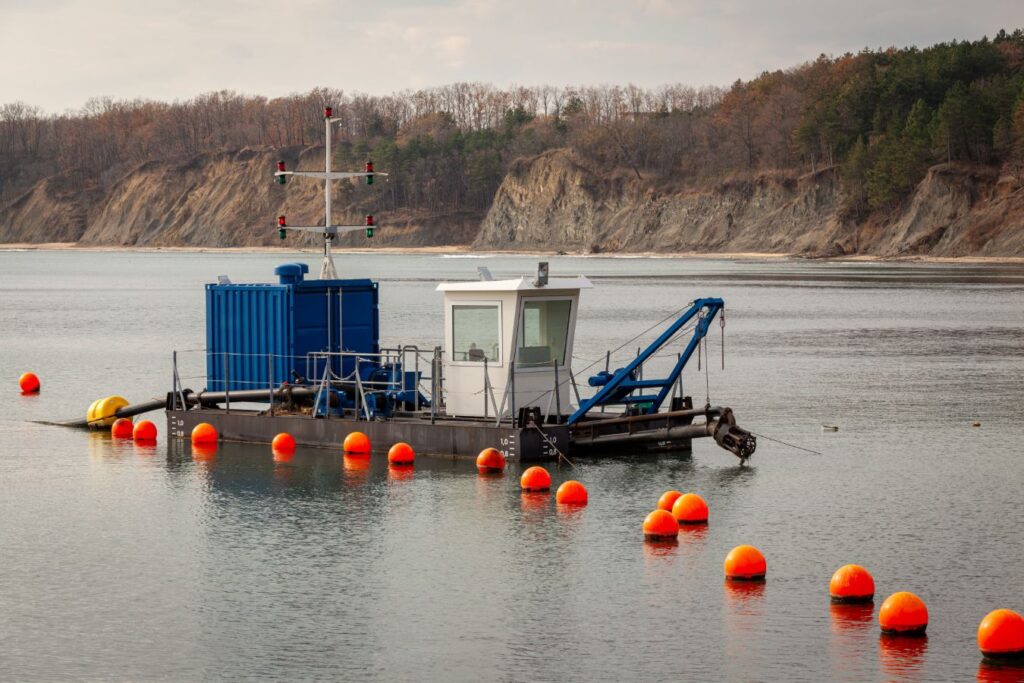
There is no one-size-fits-all solution when it comes to dredger boats. Different dredging conditions—such as water depth, sediment type, and project scale—call for different types of vessels. Understanding these variations helps clarify what a dredge boat is and which type is best suited for a particular application.
Cutter Suction Dredger (CSD)
The Cutter Suction Dredger (CSD) is a stationary dredger boat equipped with a rotating cutterhead attached to a suction pipe. It is particularly effective for cutting through compacted material like clay, packed sand, and even soft rock. As the cutter loosens the material, the onboard suction system draws it up and pumps it through a pipeline to the discharge area. CSDs are ideal for land reclamation, port expansion, and deepening navigation channels.
Trailing Suction Hopper Dredger (TSHD)
The Trailing Suction Hopper Dredger (TSHD) is a self-propelled dredge boat designed for offshore and deepwater operations. These vessels utilize trailing arms equipped with suction nozzles to collect sediment from the seabed as they move slowly. The material is stored in an internal hopper, which can later be dumped or pumped out. TSHDs are commonly used for maintenance dredging in shipping lanes, beach nourishment, and seabed leveling.
Bucket Dredger
A Bucket Dredger is a type of mechanical dredger boat that uses a continuous chain of buckets mounted on a ladder to scoop sediment from the bottom. As the buckets rotate, they collect and lift material to the deck for discharge into barges or onto shore. Bucket dredgers are highly effective in confined spaces, such as urban harbors, rivers, and canals, where precision and depth control are critical.
Amphibious Dredge Boat
An Amphibious Dredge Boat is designed for versatility in swampy, marshy, or shallow environments. These specialized dredger boats are equipped with pontoons or track systems that allow them to navigate both water and land-based terrain. Often used in wetland restoration, flood control, and pond management, amphibious dredgers can access areas that conventional dredge boats cannot operate in.
Key Applications of Dredger Boats
The versatility and power of a dredger boat make it an essential tool across a wide range of industries. Whether used for infrastructure maintenance or environmental restoration, these vessels are purpose-built to handle demanding sediment removal tasks in aquatic environments. Understanding what a dredge boat is also means recognizing the many critical roles it plays in modern development and resource management.
Navigational Channel Maintenance
One of the primary uses of a dredger boat is to maintain clear and navigable waterways. Over time, sediment naturally accumulates in rivers, canals, and shipping channels, reducing depth and posing hazards to vessel traffic. Regular dredging ensures that commercial and recreational ships can move safely and efficiently, preventing delays and costly incidents.
Port and Harbor Dredging
Ports and harbors must remain deep enough to accommodate large vessels and frequent traffic. A dredge boat is used to remove silt, sand, and debris from these areas, supporting smooth cargo operations and dock access. Maintenance dredging also helps protect infrastructure, such as quay walls, piers, and berths, from sediment buildup and erosion.
Lake and Pond Restoration
In smaller bodies of water, such as lakes, ponds, and reservoirs, sediment accumulation can negatively impact water quality, increase nutrient loads, and disrupt local aquatic ecosystems. A compact dredger boat is often deployed to remove organic sludge and restore natural depth profiles. These projects support habitat improvement, recreational use, and long-term ecological health.
Flood Control and Levee Management
Sediment buildup in drainage basins and levee systems can restrict water flow and increase the risk of flooding. Dredger boats are used to clear these obstructions, helping maintain the designed capacity of flood control infrastructure. In areas prone to heavy rainfall or river overflow, regular dredging is a proactive measure to mitigate flood damage.
Mining and Land Reclamation
In the mining sector, dredge boats are used to extract valuable materials, such as sand, gravel, and minerals, from submerged deposits. Additionally, they are critical in land reclamation projects where dredged material is used to build up shorelines or create new land areas. These applications often involve high-powered dredger boats with specialized pumps and discharge systems.
Environmental and Regulatory Considerations
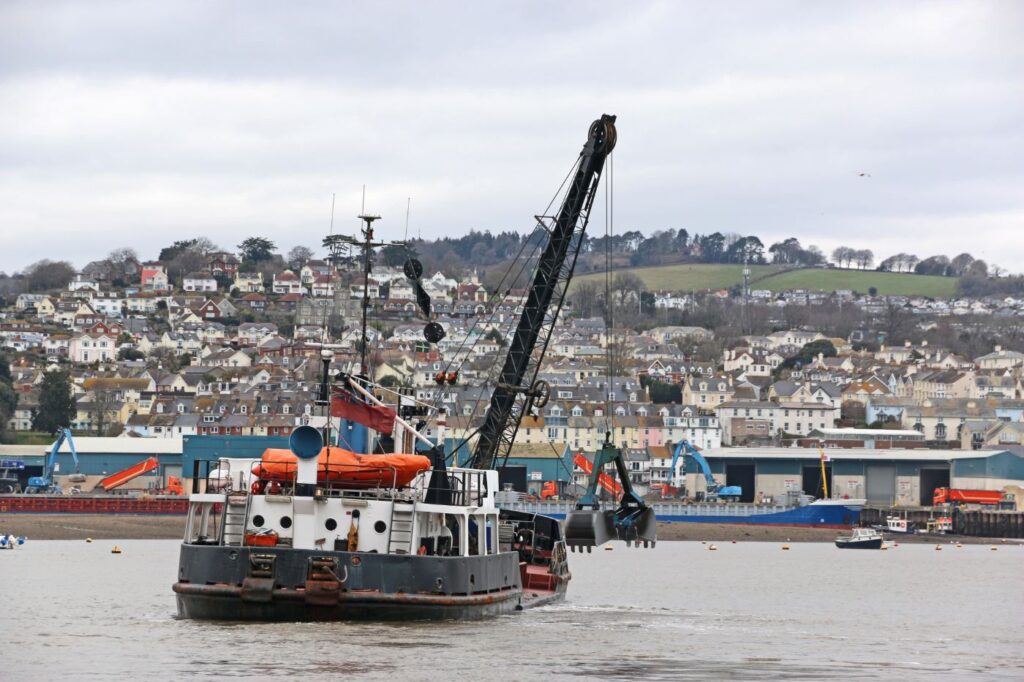
Operating a dredger boat involves more than just sediment removal—it also requires careful planning to manage environmental impact and ensure legal compliance. Whether you’re new to dredging or exploring the uses of a dredge boat, understanding the ecological and regulatory responsibilities is essential for sustainable operations.
Environmental Impact of Dredging Operations
While dredger boats play a critical role in maintaining waterways and supporting infrastructure, their activities can disturb aquatic ecosystems. Common environmental concerns include increased turbidity, destruction of benthic habitats, resuspension of contaminants, and disruption to marine life migration or breeding patterns. These risks are especially significant in sensitive habitats, such as wetlands, estuaries, and coral reefs, where even short-term sediment disturbance can have long-lasting effects.
Mitigation Techniques and Eco-Friendly Dredging Methods
To reduce environmental impact, many modern dredge boats incorporate mitigation strategies and eco-conscious technologies. Precision dredging with GPS and sonar guidance helps limit over-excavation. Use of silt curtains, low-turbidity cutterheads, and controlled flow discharge systems minimizes sediment dispersion. Additionally, newer dredger boat models are designed with quieter engines and reduced emissions, aligning with the principles of green dredging. Scheduling dredging outside of spawning seasons and implementing sediment testing before excavation are also common practices to protect local ecosystems.
Regulatory Permits and Compliance Factors
Dredging activities are heavily regulated to protect waterways and public interests. Before deploying a dredger boat, operators must obtain permits from local, state, and federal authorities. In the U.S., this often involves compliance with guidelines established by the U.S. Army Corps of Engineers (USACE), the Environmental Protection Agency (EPA), and other relevant environmental agencies. Permit requirements may involve environmental assessments, public notices, sediment sampling, and the development of mitigation plans. Knowing what a dredge boat is and how it fits into these regulations ensures that projects avoid legal delays, fines, or operational shutdowns.
Advantages of Using a Dredger Boat
A dredger boat is a vital tool for sediment management, providing practical and performance-based advantages across various environments and industries. For those exploring what a dredge boat is and how it compares to manual or land-based excavation, the benefits are clear in terms of speed, precision, and adaptability.
Efficiency in Removing Large Volumes of Sediment
One of the most significant advantages of a dredger boat is its ability to handle high volumes of sediment removal in a short period. Equipped with powerful pumps, cutterheads, or bucket systems, these vessels can operate continuously and reach depths that would be impractical for land-based equipment. This efficiency reduces operational time and supports large-scale dredging projects in ports, rivers, and reservoirs.
Versatility Across Freshwater and Marine Environments
Whether working in a shallow pond, an inland river, a coastal estuary, or an open harbor, a dredge boat can be configured to meet specific site demands. Different types of dredger boats—such as cutter suction dredgers, trailing suction hopper dredgers, or amphibious units—enable adaptation to varying water depths, sediment types, and access conditions. This versatility allows a single asset or fleet to be used across multiple applications and locations.
Reduced Manual Labor and Faster Project Timelines
Deploying a dredger boat significantly reduces the need for manual sediment handling. The automation of digging, suction, and material transport streamlines the entire dredging process, resulting in faster project completion and lower labor costs. This is particularly valuable in time-sensitive operations, such as flood mitigation, channel maintenance, or emergency dredging work.
Access to Difficult or Shallow Areas with Compact Dredge Boats
In areas where traditional marine or land-based equipment cannot operate, such as marshes, narrow canals, or sediment-choked ponds, compact dredge boats provide a viable solution. Amphibious and modular dredger boats are designed to operate in shallow water depths and tight spaces, making them ideal for restoration projects and hard-to-reach environments where precision and maneuverability are crucial.
Things to Consider When Choosing a Dredger Boat
Selecting the right dredger boat is a critical decision that impacts the efficiency, cost, and success of any dredging project. For those new to the industry and trying to understand what a dredge boat is and how to choose one, several key factors must be evaluated to ensure the equipment aligns with site conditions and project goals.
Type of Material to Be Dredged (Sand, Silt, Clay, Gravel)
Different dredger boats are designed to handle different types of materials. Fine silt or soft organic sludge may be managed effectively with suction-based systems, while compacted clay or coarse gravel often requires a cutterhead or mechanical dredging tool. Knowing the composition of the material helps in selecting a dredge type that can maintain productivity without excessive wear or clogging.
Depth and Water Conditions
Water depth, current speed, and wave action all affect how a dredge boat performs. Shallow water operations may require amphibious or modular dredgers, while deepwater projects are better suited for trailing suction hopper dredgers or high-capacity cutter suction dredgers. Stability and anchoring capabilities should also be considered in open or fast-moving waters.
Project Size and Duration
For short-term or small-scale dredging jobs, a compact and mobile dredger boat may be sufficient and more cost-effective. Long-term or high-volume projects, on the other hand, may require larger, more powerful vessels that can operate continuously. Selecting equipment that aligns with the scope of your project helps prevent underperformance or excessive operational costs.
Equipment Features: Power Source, Pump Size, Mobility
Key features such as the type of power system (diesel, electric, or hybrid), pump capacity, discharge distance, and overall mobility are important factors when choosing a dredge boat. Projects requiring frequent relocation or access to remote areas benefit from portable or trailer-mounted designs, while fixed-site operations may prioritize throughput and automation.
Budget and Operating Skill Requirements
Finally, it’s essential to match the dredger boat not only to your budget but also to the skill level of your crew. Some dredging systems are highly automated and user-friendly, while others demand experienced operators and rigorous maintenance. Understanding these requirements helps prevent downtime and ensures the vessel is operated safely and effectively from day one.
Maintenance Tips for Dredge Boats
Proper maintenance is essential to ensure the long-term performance, reliability, and safety of any dredger boat. Whether you’re managing a small portable dredge or a large commercial vessel, following a structured maintenance routine helps reduce downtime and extend equipment life. For those learning what a dredge boat is and how to keep it in optimal condition, these key practices are fundamental.
Daily Inspection Checklist (Hull, Cutter, Hoses, Pump)
A daily visual inspection is the first line of defense against unexpected failures. Operators should inspect the dredger boat’s hull for any signs of damage or corrosion, ensure that the cutterhead or bucket is clear of obstructions, check discharge hoses for cracks or leaks, and verify that the slurry pump is functioning properly. Any loose bolts, wear components, or fluid leaks should be addressed immediately before starting operations.
Lubrication and Hydraulic System Care
Regular lubrication of moving parts, such as winches, cutter drives, and pivot points, is essential for smooth operation. The dredge boat’s hydraulic system should be checked routinely for proper pressure levels, clean filters, and fluid quality. Contaminated or low hydraulic fluid can lead to overheating, erratic movements, or system failure, especially during high-load dredging tasks.
Regular Flushing and Sediment Removal from Internal Systems
Over time, sediment can accumulate inside pipelines, pumps, and valves, especially when working with heavy or abrasive materials. Periodic flushing of these systems with clean water prevents buildup, reduces wear, and maintains consistent flow rates. Operators should also inspect suction and discharge lines for blockages after each shift to ensure optimal performance.
Seasonal Storage or Transport Best Practices
When not in use, particularly during off-seasons, dredge boats should be properly cleaned, drained, and stored to prevent corrosion and system degradation. Remove all sediment and moisture from tanks and hoses, disconnect the battery or electrical systems, and protect sensitive components from UV and weather exposure. For trailered dredger boats, ensure that all tie-down points are secure and the vessel is stabilized during transport or storage.
Conclusion
Understanding the function and versatility of a dredger boat is key to making informed decisions for your dredging needs. Whether you’re working in deepwater infrastructure, inland restoration, or emergency flood control, understanding what a dredge boat is and how to select the right one can significantly enhance efficiency, reduce costs, and support long-term sustainability. As dredging technology continues to evolve, these boats remain indispensable tools for shaping and preserving aquatic environments worldwide.


